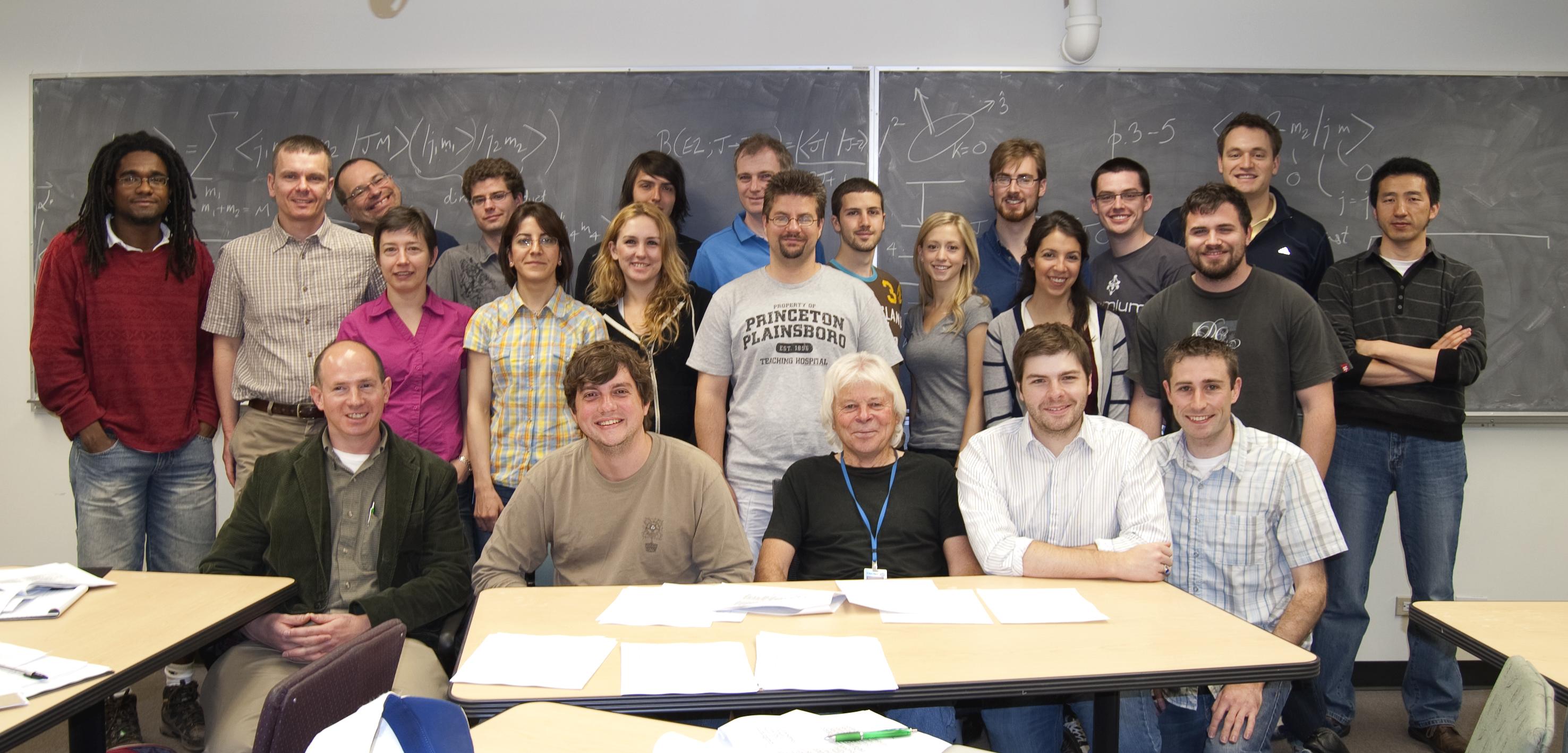
This week TRIUMF hosted a workshop on Coulomb Excitation Techniques with Radioactive Beams organized by Corina Andreoiu of Simon Fraser University and TRIUMF Scientist, Adam Garnsworthy. The expert instructors are well established researchers in the field, Professor John Wood (Georgia Tech, USA), Dr. Mitch Allmond (Oak Ridge National Laboratory, USA), and Dr. Adam Hayes (University of Rochester, USA).
The five day workshop had just over twenty participants who were students, postdoctoral fellows, and young scientists from member universities across Canada, and from the UK. The number of participants was kept small to ensure maximum interaction with the instructors and the best possible learning experience for the students.
Coulomb excitation is a reaction mechanism used to study atomic nuclei at experimental facilities such as TIGRESS at TRIUMF-ISAC. In the Coulomb Excitation process, a beam of radioactive nuclei is accelerated and made to impinge on a target. As the beam and target nuclei both contain protons they are positively charged and therefore repel each other. The beam nucleus is accelerated so that it has enough energy to overcome this repulsion and the surfaces of the two nuclei can get close to each other. As the nuclei get close together they feel the electromagnetic force of the protons in the other nucleus and gain energy, moving into excited states. The beam nucleus is scattered by this interaction and detected in silicon detectors to measure the energy and angle of the scatter.
The nuclei de-excite by emitting gamma-rays (a high-energy form of light) which are detected in Germanium detectors such as those in TIGRESS. The beam energy is selected so that the beam nucleus and target nucleus get as close as 5 femtometers to each other, but no closer. If the nuclei get closer then the excitations of each nuclei can come from the strong nuclear force rather than the electromagnetic force. This would modify the results of the experiment and make the interpretation much more complicated. These experiments measure nuclear matrix elements in the nuclei of interest and the results reveal information on the interactions between the protons and neutrons inside the nucleus as well as the overall shape of the nucleus.
The workshop was divided into lectures in the morning from Professor John Wood and afternoon interactive tutorial sessions lead by Dr. Mitch Allmond and Dr. Adam Hayes. John provided a detailed illustration of the theory of angular momentum and quantum mechanics which are the foundation for our understanding of nuclei and nuclear reactions. Students came to the tutorials with the GOSIA software (the primary analysis and simulation tool for Coulomb excitation experiments) installed on their own laptops and were guided through example calculations before advancing to building their own simulations relevant to the experiments which they plan to perform in the near future at TRIUMF.
The lectures and tutorials from this workshop have provided participants with the best tools and knowledge available to successfully simulate, perform, analyze, and interpret the results of world-leading experiments. This workshop will hopefully lead to similar events in the future to serve the ISAC program and provide expert training for graduate students from member universities.
Through sponsorship, the workshop was provided at no cost to the participants. The organizers would like to thank Simon Fraser University, TRIUMF, Canberra, and the Canadian Institute for Nuclear Physics.
-- By Adam Garnsworthy, TRIUMF Research Scientist
